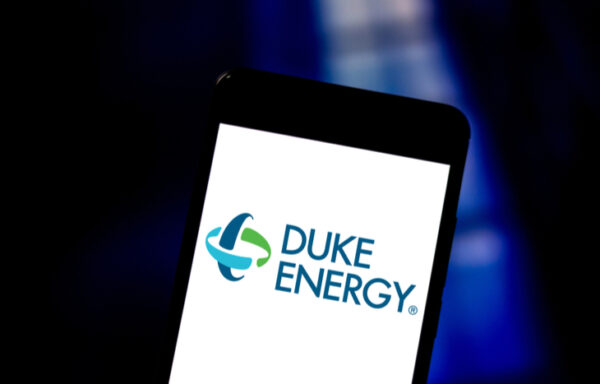3 Best Lithium Stocks for Mining Companies in 2022
Lithium is one of the top precious metals of the 21st century. It’s helping power new technologies and the emerging trend is a great opportunity for investors. That’s why I jumped into the data and found three of the best lithium stocks for investors.
I’ve listed the lithium mining stocks below. But before we get to those, let’s look at the powerful trend at play. Lithium has long been used in ceramic and glass production, as well as air treatment and polymer production. But its growing demand is in rechargeable batteries…
Investing in Lithium Stocks as Demand Grows
Global demand for lithium is growing by leaps and bounds. That’s due in part to electric vehicle growth worldwide. And the impact for the energy industry has made this “energy metal” a hot commodity.
Already, lithium’s price have more than tripled in the past few years. But what’s behind this surge in price and demand?
Lithium-ion batteries have the ability to store a lot of energy in a small space. Energy density is measured in watt-hours as a function of volume, or liters. The energy density of the basic lead-acid battery in your car is 30 Wh/L. But a basic lithium-ion battery’s density is 250 Wh/L.
And new lithium-ion batteries in development will be able to store even more energy…

Due to their compact size and huge power storage, lithium-ion batteries are perfect for use in electric cars. Plug-in electric vehicles like the Tesla Model 3 are affordable, efficient and can travel about as far as a comparable gas-powered car. Their only weakness is charging time… and that’s becoming a nonissue as rapid chargers get better.
Add in the fact that a lead-acid battery is an environmental disaster in a box, and you can see there are a lot of advantages for lithium. That’s why lithium batteries are likely to be the power storage system of the 21st century.
How to Invest in Lithium Stocks
The demand for lithium is about to shift into even higher gear. And select lithium stocks have the potential to see outsized returns.
If you want broad exposure to the best lithium stocks, consider the Global X Lithium & Battery Tech ETF (NYSE: LIT).
This ETF has roughly 40 holdings, which include lithium mining stocks and also the manufacturing side of the business. And since it’s the only lithium ETF out there, it’s the lone diversified direct play on the market.
Now if you want individual lithium stocks, miners are a good way to go. They will benefit directly from the growing lithium demand.
Lithium Mining Stocks
The “Big 3” companies in the lithium mining business are…
- FMC Corp. (NYSE: FMC)
- Albemarle Corp. (NYSE: ALB)
- Sociedad Química y Minera de Chile (NYSE: SQM)
Combined, these lithium mining companies produce more than half of the world’s lithium.
All three companies have active lithium mining operations in different parts of the globe – most are in Chile, Bolivia and Argentina (known as “The Lithium Triangle”), Australia, and the western United States. Combined, the “Big 3” were projected to see earnings increases of 36% on average this year, according to Bloomberg.
There are some great opportunities out there that could see profits soar alongside lithium prices. And lithium mining stocks are one of the best places to start. Just make sure to do your own due diligence before you invest.
More Trends Behind Lithium Batteries
Look around the room you are in. Do you see a cellphone, tablet, camera or laptop?
In today’s web-connected world, I bet you do. There’s a good chance you have one in your pocket or on your desk at this moment. In fact, you might be reading this on a device that’s using a lithium battery.
The growth in mobile devices has also pushed new lithium demand. This is great for lithium stock investors.
Battery maker Panasonic is looking for a 74.9% compound annual growth rate (CAGR) in stationary storage lithium batteries. These batteries can power your home or workplace. They’ll even revolutionize how you get from your home to your workplace. And Panasonic is looking for a 16.9% CAGR in automotive lithium-ion batteries.
The Musk Effect
The main industrial driver of the electric car revolution – and, by extension, the lithium surge – is the world’s most popular electric car company, Tesla (Nasdaq: TSLA).
The batteries Tesla uses for its Model S electric cars are Panasonic’s lithium-ion batteries made of lithium, nickel, cobalt and aluminum oxide. A lot of lithium goes into each battery – about 21.4 kilograms (47 pounds) per car.
Tesla CEO Elon Musk wants a “complete transformation of the entire energy infrastructure of the world to completely sustainable zero carbon.” And to reach that goal, he wants lithium-ion battery production on an enormous scale. This bodes well for investing in lithium stocks.
Enter the Lithium Gigafactory
In 2018, Elon Musk started selling electric cars for just $35,500 apiece (including the tax rebates and incentives). That’s a little less than half of what a Model S costs now. Eventually, Musk wants to make electric cars so affordable that they become the main form of private transportation in the world.
The Tesla Gigafactory in Nevada will be the world’s largest lithium-ion battery plant. Carrying a price tag of roughly $5 billion, the factory will make enough battery packs to power 500,000 electric cars a year.
And it won’t just make car batteries. About one-fourth of the Gigafactory’s capacity will be for Tesla’s new Powerwall storage batteries for home solar systems. And these will also require lithium.
Exactly how much lithium the factory will require is a matter of dispute. Tesla said the Gigafactory’s expected lithium demand per year would be 8,000 metric tons in 2020, the first full year of production.
But there are other estimates. Bank of America says the factory will probably use 9,000 metric tons a year. Goldman Sachs estimates that the Gigafactory could require 15,000 to 25,000 metric tons of lithium when it is operating at full capacity – in other words, running around-the-clock shifts.
Per Tesla’s numbers, batteries would suddenly gobble up 53% of supply. And if you believe Wall Street analysts looking into lithium stocks, it could be a heck of a lot more.
Electric car batteries are rated in kilowatt-hours. Factories are rated in gigawatt-hours. The Gigafactory will have an annual production capacity of 35 million kWh, or 35 GWh. It will also source an additional 15 GWh from external suppliers.
But that’s just the beginning of the story. Elon Musk wants to build 200 factories around the world. And he’s not the only one with his eye on the lithium market.
Tesla’s biggest rival will likely be Chinese auto manufacturer BYD, also known as Build Your Dreams, a company backed by Warren Buffett. BYD is already building electric buses on American soil. It also has global gigafactory ambitions. By the end of the year, BYD should have 10 GWh of battery production capacity. And with the addition of a new factory in Brazil, it expects to increase that to 34 GWh by 2020. That’s about the same capacity as Tesla’s Gigafactory.
Beyond that, every major auto manufacturer has more than one fully electric car. These manufacturers might outsource their batteries. And that would mean huge demand for lithium batteries.
Thanks to the surge in demand for rechargeable batteries, companies are scrambling for supplies of lithium. And there is a major supply shortage on the horizon.
Final Thoughts on Investing in Lithium
Many trends are coming together to support investing in lithium stocks. The price has already climbed but there’s plenty of room to grow. The lithium mining stocks above are a great way to get direct exposure.
If you’re interested in more investing trends and ideas, feel free to continue exploring Investment U. There are lots of good investing opportunities to consider today…
[adzerk-get-ad zone="245143" size="4"]




